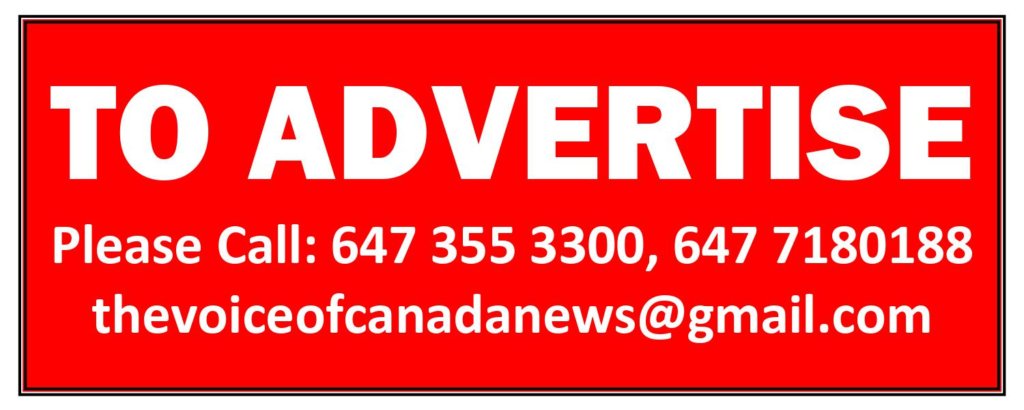Government of Canada announces coming into force of important measures to create work environments that are healthier, safer and fairer
The Voice of Canada News:
The Government of Canada is committed to improving workplace safety and equality and to protecting workers’ rights. That is why we are modernizing the Canada Labour Code and making changes to create work environments that are healthier, safer and fairer.
Today, the Minister of Labour, Filomena Tassi, announced that the following legislative and regulatory changes have come into force as of January 1, 2021:
Strengthening prevention of harassment and violence in the workplace
- The anti-harassment and violence legislation (Bill C-65) puts in place a regime that takes all forms of harassment and violence into consideration.
- Employers in federally regulated workplaces and parliamentary workplaces must conduct a workplace assessment, develop a workplace harassment and violence prevention policy, develop and implement violence and harassment training, and establish a thorough process for dealing with incidents.
Improving compliance with the Code
- The new Part IV (Administrative Monetary Penalties) of the Code establishes an administrative monetary penalties system, which penalizes employers who do not comply with the Code’s health and safety or labour standards.
- Employers who do not comply with the Code’s occupational health and safety or labour standards provisions could face a monetary penalty of up to $250,000. Monetary penalties will be calculated based on the type of violation, the size of the business and any previous monetary penalties for violations of the same or higher classification.
- To provide employers with more time to adjust to these changes, monetary penalties for administrative violations—for example, record keeping and reporting requirements—will not be imposed until January 1, 2022.
Enhancing equality in the workplace
- The amendments to the Employment Equity Regulations introduce new pay transparency measures to raise awareness of the wage gaps experienced by women, Indigenous Peoples, persons with disabilities and members of visible minorities in federally regulated workplaces. With the leadership of employers, we expect these measures to help shift business culture and expectations toward greater equality and better outcomes for workers and their families.
- The first release of aggregated wage gap information is expected in the winter of 2023.
Together, these efforts will help create workplaces where workers feel safe, valued, included and secure. When workers feel good, their motivation is increased and they are better able to reach their potential—this is good for workers, employers and all Canadians.
The Labour Program has been working closely with stakeholders to help them prepare for the coming into force of these importance changes. Employers and other workplace parties are encouraged to consult Canada.ca/labour or to contact the Labour Program at 1-800-641-4049 for more information or for support implementing these changes in their workplace.
Quotes
“Making workplaces healthier, safer and fairer will provide Canadians with a real chance to succeed. The regulatory changes coming into force today will create work environments in which federally regulated workers will be better able to achieve their potential. These changes will benefit workers, employers, the economy and all Canadians.”- Minister of Labour, Filomena Tassi
Quick facts
- The new Part IV of the Code also brought into force the following:
- Compliance orders: a new enforcement tool under Part III (Labour Standards) of the Code. Compliance orders require employers to cease a contravention and take the specified steps within a stated period.
- Provision to prohibit misclassification of employees: a new Code provision that prohibits employers from treating employees as though they are not employees(for example, classifying an employee as an independent contractor) and requires employers to prove otherwise if a complaint is filed under Part III of the Code.
- New Head of Compliance and Enforcement: the new Head exercises the powers and performs the duties and functions related to day-to-day administration and enforcement of Part II (Occupational Health and Safety), Part III (Labour Standards) and Part IV (Administrative Monetary Penalties) of the Code.
- The Government recognizes that Canadian workplaces must evolve to prevent harassment and violence. To support these efforts, the Government is also putting in place awareness-building on harassment and violence prevention and a toll-free help line (1-800-641-4049) to support employees and employers. This is in addition to the Workplace Harassment and Violence Prevention Fund.
- Canada is the first country to make information publicly available regarding wage gaps for women, Indigenous people, persons with disabilities and members of visible minorities working in federally regulated workplaces.
- As announced in the Fall Economic Statement 2020, the Government will invest $6.6 million in 2021–22 to support a task force on renewing the Employment Equity Act. Once established, the task force will study, consult, and advise the Minister of Labour on how the federal employment equity regime could be modernized.







